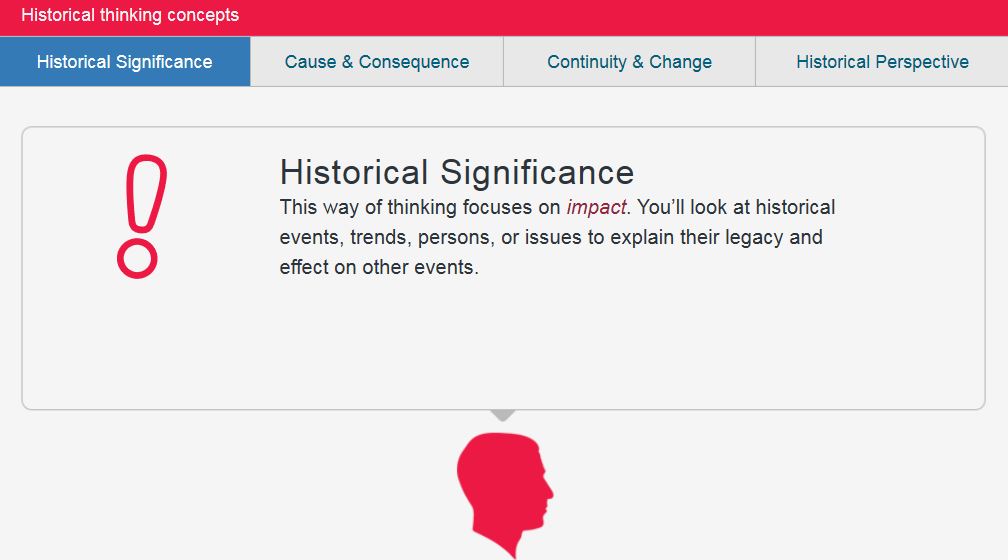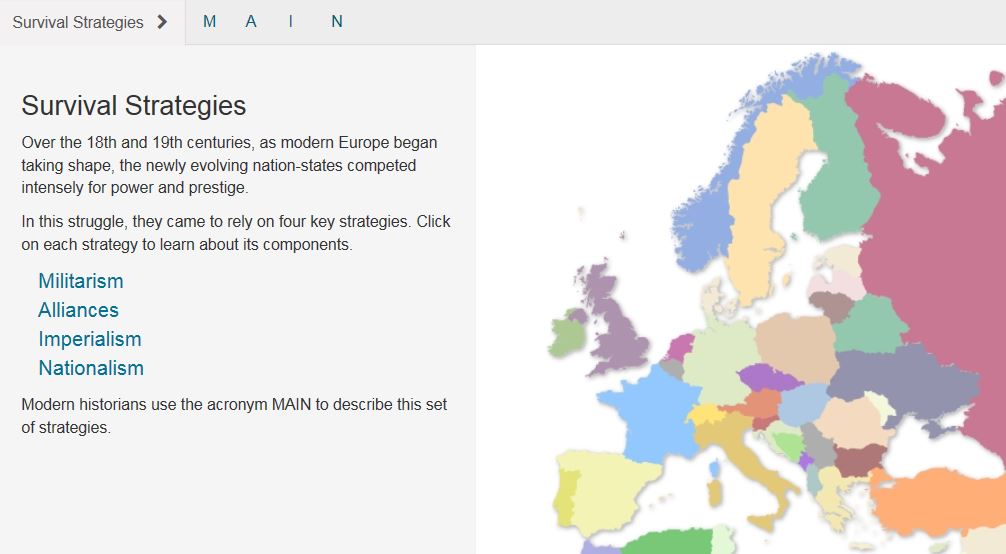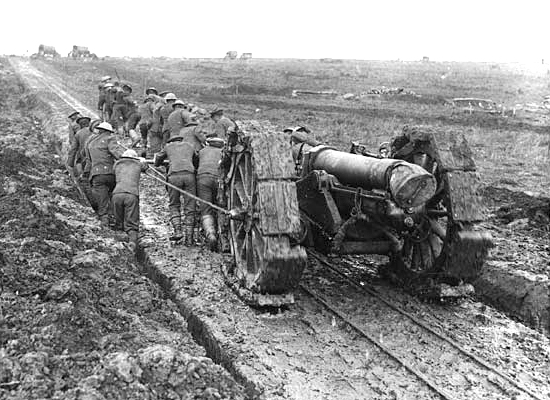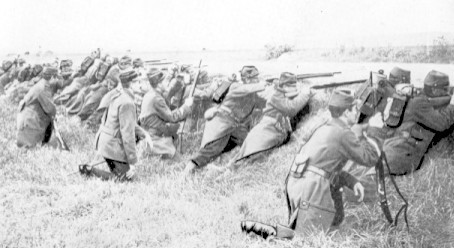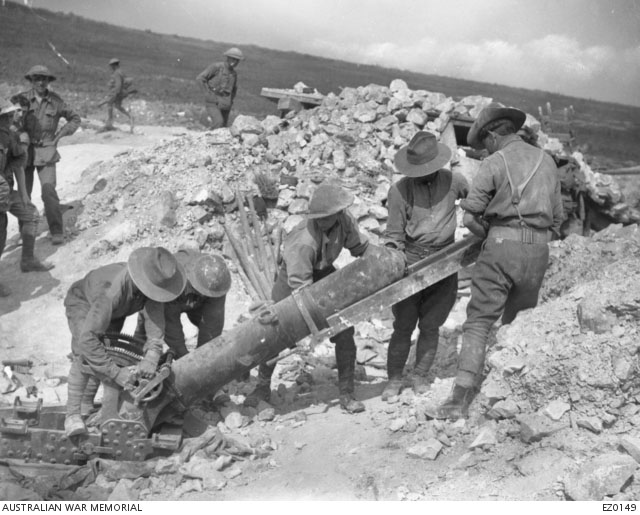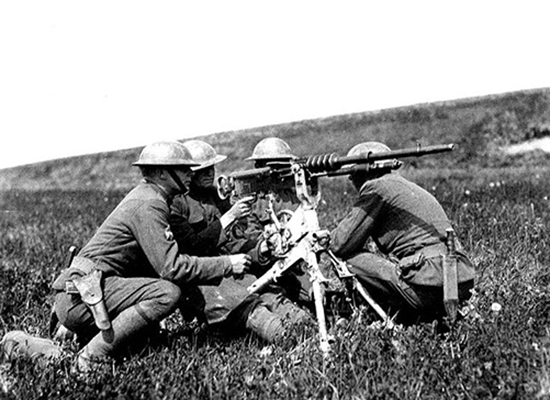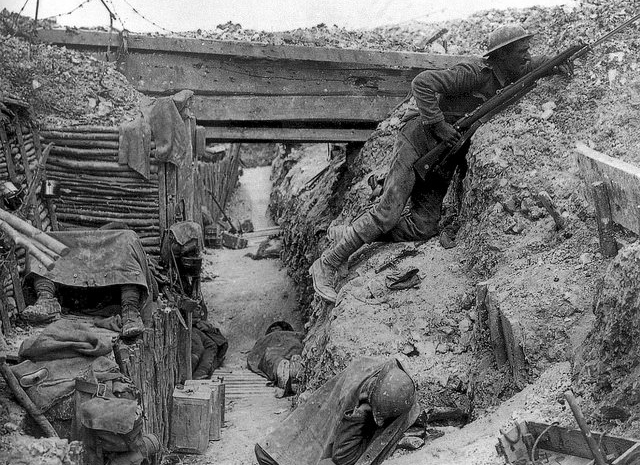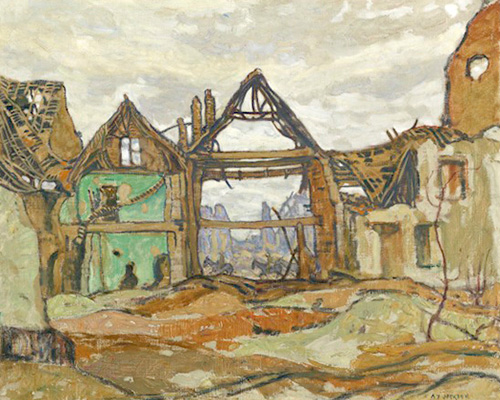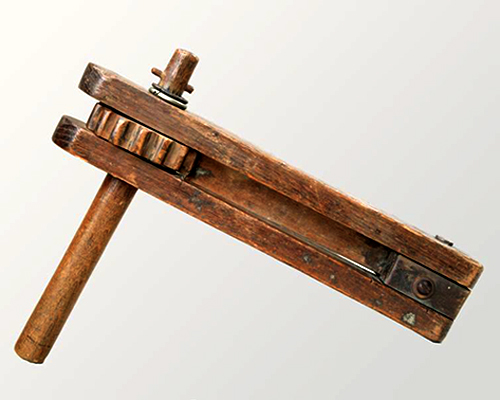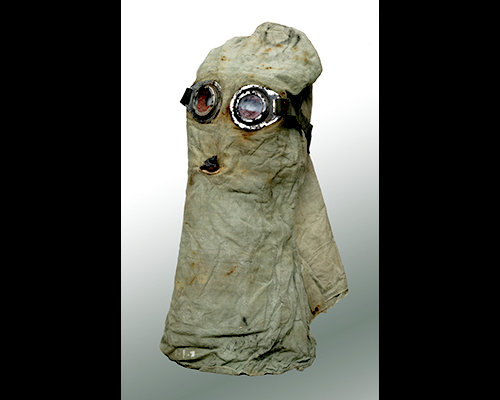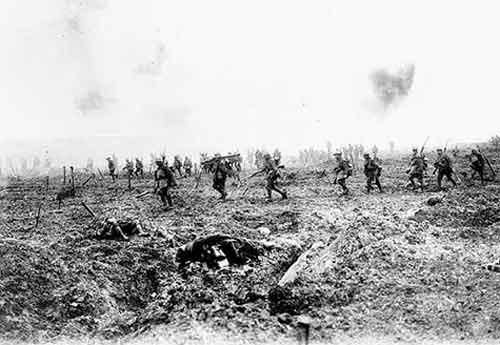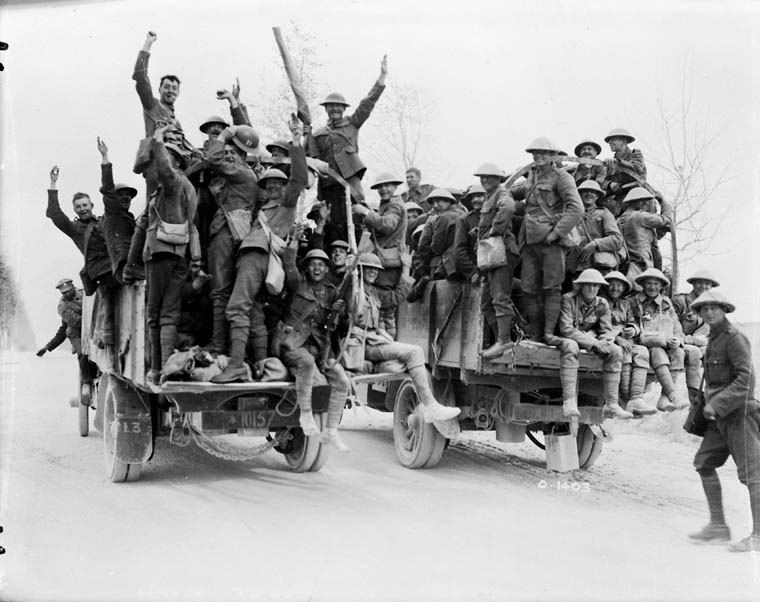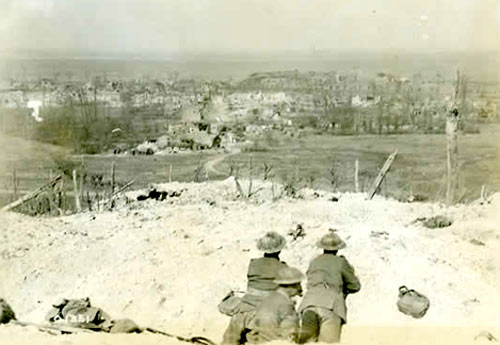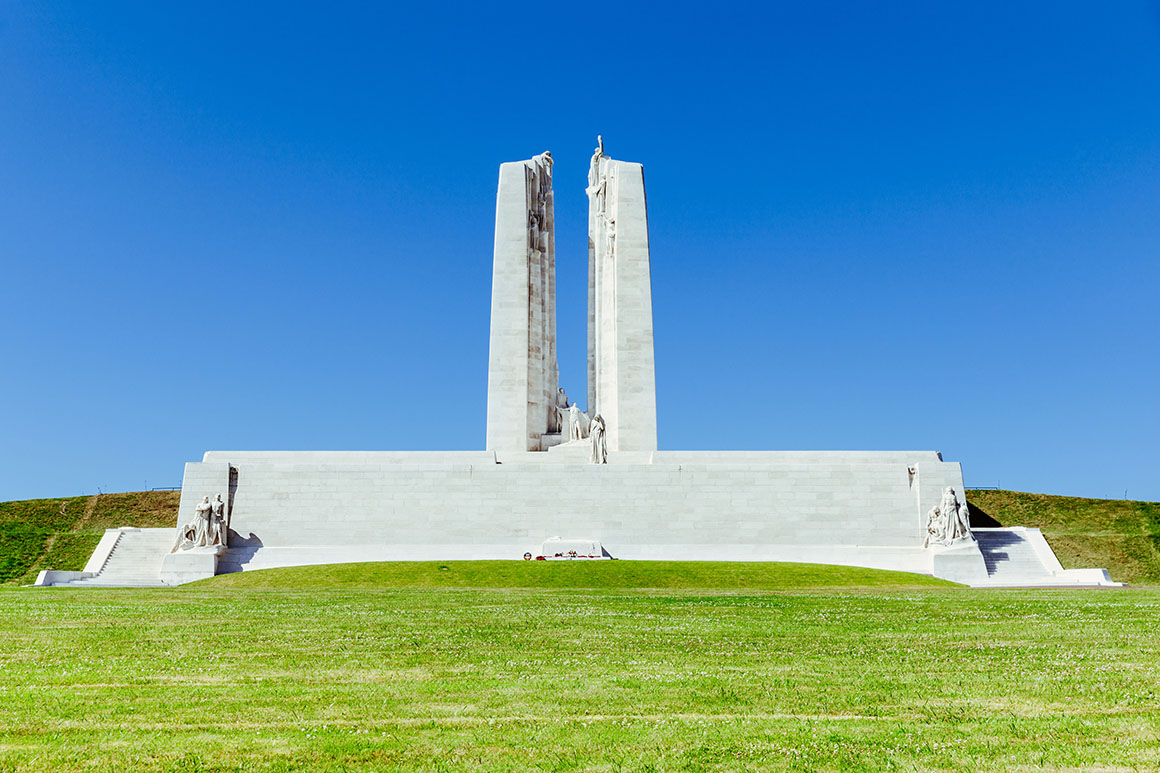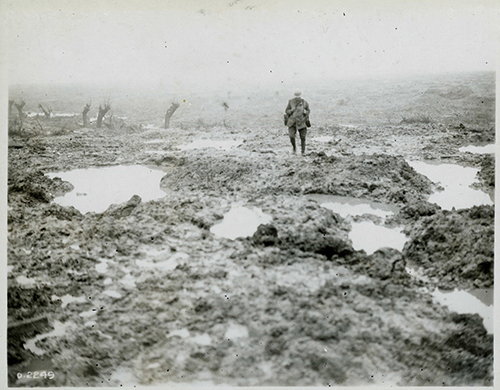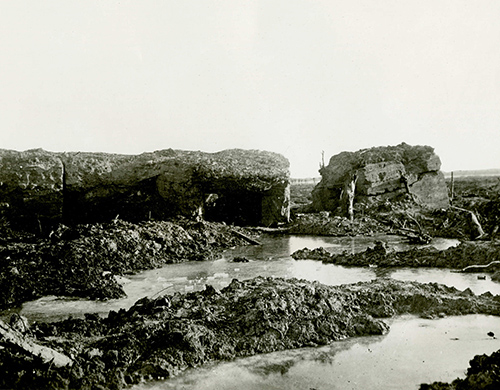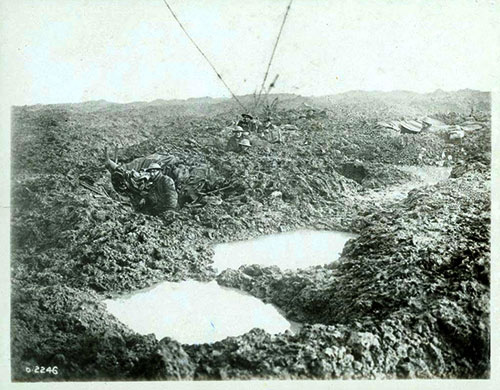Course Introduction
– Pierre Trudeau, 1970
The past is to be respected and acknowledged, but not to be worshipped. It is our future in which we will find our greatness.
Welcome to the CHC2P-D, Canadian History since World War I. In this Grade 10 Applied course, you’ll learn how Canada has changed over the last century.
In just 100 years, Canada has faced many difficult tests: two World Wars; the Great Depression; the Cold War; and other political, social, and economic crises.
On the world stage, Canada earned a reputation as being a strong, independent nation.
As you study Canada’s past, you’ll see how it became the country you know today – a country ranked among the best in the world to live in. Read this quote from former Prime Minister Diefenbaker and consider, as you navigate this course, how effectively Canada was able to uphold his pledge.
– John Diefenbaker, 1960
I am a Canadian, free to speak without fear, free to worship in my own way, free to stand for what I think right, free to oppose what I believe wrong, or free to choose those who shall govern my country. This heritage of freedom I pledge to uphold for myself and all.
Overview
This course will focus on four time periods:
- 1914–1929 (Learning Activities 1.1 – 1.5)
- 1929–1945 (Learning Activities 2.1 – 2.5)
- 1945–1982 (Learning Activities 3.1 – 3.5)
- 1982 to the present (Learning Activities 4.1 – 4.5)

You’ll explore each period’s key events, and see how they changed the lives of different groups in Canada. You’ll look at the role of conflict and cooperation in Canadian society, and at Canada’s changing role within the world.
Historical thinking concepts
This course does more than provide you with the facts surrounding events of the past. It invites you to think historically about them
What does it mean to think historically? It is a way to engage with the past by trying to understand what makes them significant and relevant. Explore the four concepts on the following page to learn more about historical thinking concepts.
Press Enter here for an accessible version of Historical thinking concepts (Opens in new window)
Introduction
The First World War was a global conflict that involved many countries around the world. It caused tremendous damage while having a significant impact on Canadian society. It pushed Canada onto the world stage and towards greater independence from Britain.
When the war began in 1914, Canada was already a nation. But most of the world still saw it as just one small part of the big, powerful British Empire.
What began as a localized conflict exploded into a World War involving numerous countries that lasted four years (1914-1918).
Over 30 million soldiers and seven million civilians were killed or wounded during the war.
What you will learn
After completing this learning activity, you will be able to
- explain the main causes of the First World War and how Canada became involved
- describe Canada’s contributions to the war and analyze the significance of Canada’s military participation
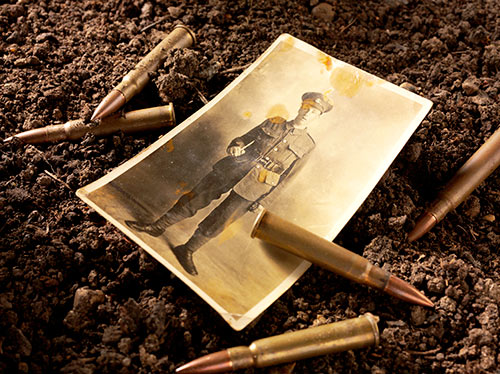
Long-term causes of World War I
World War I (WWI) began on the continent of Europe. A continent is a large mass of land, and the world has seven continents. On a continent, you can have one or many countries.
Today Europe contains over 30 countries or nation-states. A nation-state is a geographic area with its own cultural and political identity.
Europe has not always looked like this. Europe has a history of conflict; its map has changed greatly over the centuries as countries and empires have risen and fallen.
In the 18th and 19th centuries, nation-states were struggling to survive and gain power. The strategies they used paved the way for World War I.
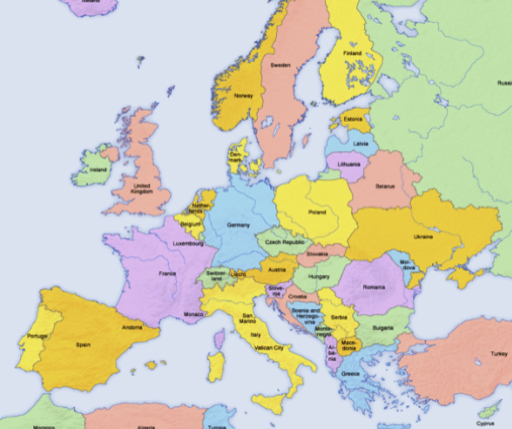 Map of modern-day Europe
Map of modern-day Europe MAIN causes of WWI
World War I started with an assassination that set off a chain reaction. It’s easy to identify the event that sparked the war, but the long-term causes are deeper and more complex.
Explore each of these four casus in the interactive element on the following page.
The acronym “MAIN” will help you to remember the four long-term causes of WWl.
Militarism
Alliances
Imperialism
Nationalism
Test your knowledge
How well do you understand the MAIN causes of World War I?
Find out by trying these multiple-choice questions.
“A” stands for “Alliances”
Let’s take a closer look at one of the long-term causes of the war. You know that the “A” in MAIN stands for “Alliances.” You know that military alliances were important in Europe, and that they were also changeable: one day’s ally could become the next day’s enemy. But what exactly was the situation in 1914, when war broke out?
Balance of power in 1914
In 1914, there was a delicate balance of power in Europe. Europe was basically divided into two sides.
On one side were the empires of Germany and Austria-Hungary, /and Italy. They were known as the Triple Alliance or Central Powers.
These nations agreed to work together if one of them was threatened.
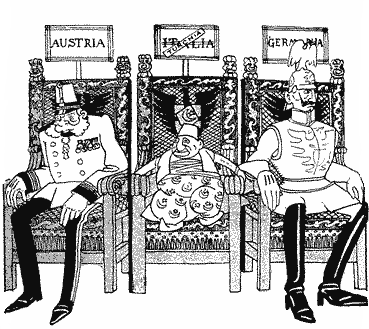
On the other side were Great Britain, France, and the Russian Empire. They were known as the Triple Entente.
These nations agreed to work together if one of them was threatened.
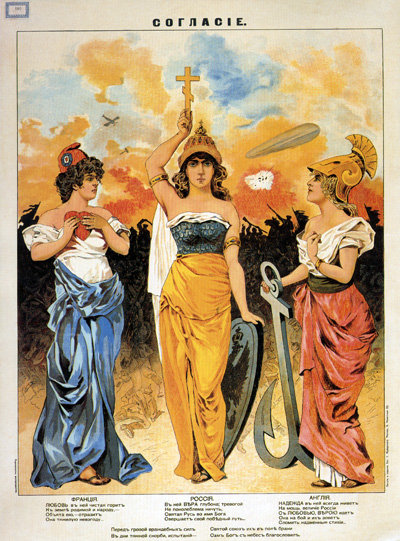
Balance of power in 1914
So there were two big alliances in the years before war broke out. This meant that if any one of the nations involved was attacked or threatened, its allies would get pulled in.
It was a tense situation. Let’s look at the event that lit the flame.
Short-term causes of WWl
World War I was caused by a combination of long-term and short-term causes. You’ve seen that the long-term causes can be summed up by the acronym MAIN. Having taken a close look at the “A” of MAIN, you know the system of alliances meant that a domino effect would take place if one nation were threatened.
The immediate or short-term cause of World War I was the assassination (murder) of a man named Archduke Franz Ferdinand on June 28, 1914. This was the spark that started a global conflict. It lasted four years, and changed the Western world forever.
An archduke is assassinated
Archduke Franz Ferdinand was the heir to the Austro-Hungarian throne. On June 28, 1914, Ferdinand and his wife Sophie were visiting Sarajevo, the capital of Bosnia. The two of them were shot dead by a young Serbian radical named Gavrilo Princip.
Why were they shot?
The reigning emperor of Austria-Hungary was quite old. When he died, Franz Ferdinand would become emperor. Franz Ferdinand wanted to “fold” Serbia into the Austro-Hungarian Empire. This idea was strongly opposed by young Serbian radicals, who wanted to create their own united Serbian state.
Serbian radicals had formed a secret society called the Black Hand. They thought that eliminating the archduke would help their cause. They encountered some problems, but managed to carry out the assassination.
If you’re interested in seeing exactly what happened that day, go online and search for “Map as history,” and “assassination in Sarajevo.”
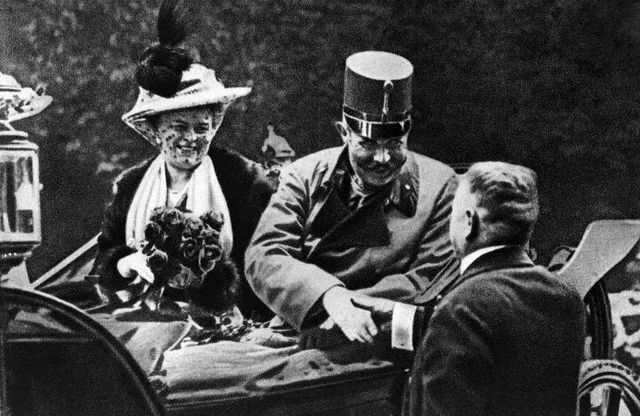
June 28, 1914: Archduke Franz Ferdinand and his wife Sophie arriving in Sarajevo.
A chain reaction
A Serbian shot an Austrian. So why did Germany, Russia, France, and Great Britain get involved in a war?
After Franz Ferdinand’s assassination, countries involved in alliances honoured the promises they’d made, and quickly got involved. The following cartoon, called “The Chain of Friendship,” illustrates how alliances led to a chain reaction.
The Chain of Friendship
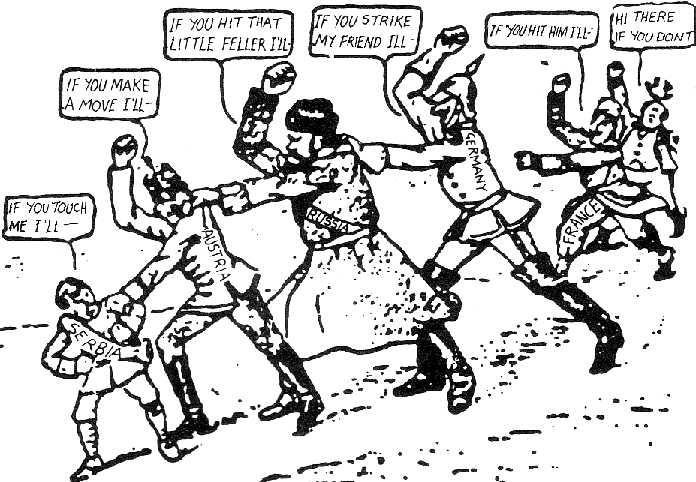 The Chain of Friendship: If Austria attacks Serbia, Russia will fall upon Austria, /Germany upon Russia, and France and England upon Germany. Source: Brooklyn Daily Eagle, July 1914.
The Chain of Friendship: If Austria attacks Serbia, Russia will fall upon Austria, /Germany upon Russia, and France and England upon Germany. Source: Brooklyn Daily Eagle, July 1914.
What is this cartoon trying to show?
This cartoon shows the military alliances that existed before WWI. The web of alliances caused a chain reaction once one country was threatened.
Causes and consequences of the war
Do you know any books or movies in which a character travels back in time? Sometimes by changing one little thing, the character changes the course of history.
This happens a lot in science fiction, but some historians believe that there might be a grain of truth in it. This quote is taken from a well-known book on historical thinking:
What do you think?
You’ve looked at both the long-term and immediate causes of the First World War. Do you think that it was just a matter of time before a great war took place? Was there one single event or action that caused the war?
If you could you go back in time and change one thing to prevent the war, what would it be? Explain your reasoning.
This answer was given by student Claudia:
I would try to save Archduke Ferdinand since his assassination was the trigger for WWI. I know that the conditions for war were in place. However, even if a different trigger had eventually led to war, it would have been a different war – maybe not as bad. This quote is taken from a well-know book on historical thinking:
Source: Seixas, Peter, and Tom Morton.
Alter a single action or condition, and an event might have turned out differently.
The Big Six Historical Thinking Concepts. Toronto: Nelson Education, 2013. 102
What was WWI like?
What were the two sides in World War I? To simplify a bit, we’ll say that on one side there was Germany and Austria-Hungary. These formed the “Central Powers.” In discussions of WWI, you’ll often see this side referred to as “the Germans” as a kind of shorthand.
The other side was Britain, France, and Russia. (Canada was involved as part of the British Empire.) These formed the “Triple Entente” or the “Allied Powers.” In discussions of WWI, you’ll often see this side referred to as “the Allies” or “the Allied forces” or “the Western Allies.”
No one anticipated that the war would be so long and widespread. Leaders, soldiers, and people on the street thought it would all be over by the end of 1914. However, things did not go as planned, and the war was like nothing anyone had seen before.
One major development of the war was trench warfare. This new form of combat was devastating for the participants, local citizens, and the surrounding countryside. Before we look at trench warfare, let’s look at what battle was like before WWI.
Warfare before WWI
In past conflicts, when two big armies met on a battlefield, they attacked each other directly, head-on. Usually both sides used cavalry (soldiers on horses), infantry (soldiers on foot), and rolling artillery like cannons. The “rules of engagement” were quite clear.
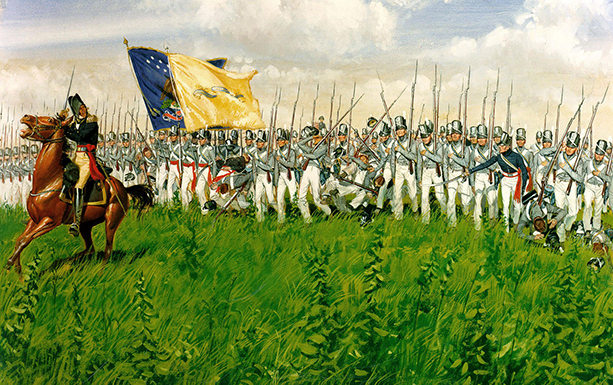 The Battle of Chippawa in Ontario, 1814. Armies moved across territory and engaged in battle face to face. Both sides used similar tactics, formations, and weapons. Battles lasted for about a day.
The Battle of Chippawa in Ontario, 1814. Armies moved across territory and engaged in battle face to face. Both sides used similar tactics, formations, and weapons. Battles lasted for about a day. 
How was trench warfare different?
As weapons technology changed, so did the nature of war itself. Over the course of World War I, new explosive devices – such as grenades, mines, and mortar shells – came into play. Soldiers had more options for shooting from a distance. They had artillery, repeating rifles, rifles with telescopic sights, machine guns, and other 20th-century weapons.
If soldiers had met one another head to head on a battlefield as they had in the past, they would have been killed immediately by artillery or machine-gun fire.
So soldiers ended up “digging in.” To stay out of the direct line of fire, soldiers dug trenches that were about as deep as the height of a man. Trench warfare became the main method of fighting for the four years of war.
The weapons, equipment, and “rules” of war kept changing. Systems of attack, defense, communication, and transportation had to be improvised on the fly. Longstanding 19th-century methods and conventions were replaced through trial and error. Not much about warfare remained the same.
Further research
If you want to know more about trench warfare, do some Internet research. Try search terms like “Life in the trenches WWI” or “Trench warfare WWI.” The BBC is one reliable source. Their history section offers some first-hand accounts of life on the front.
A game has been developed for the BBC to mark the 100th anniversary of the First World War. The Canadian War Museum also hosts a game based on the real-life experiences of soldiers who fought during the First World War.
Enjoy your search!
How was trench warfare different?
Concider selection of photos from the First World War to get an idea of conditions, equipment, and weaponry over the course of the war.
What was the Western Front?
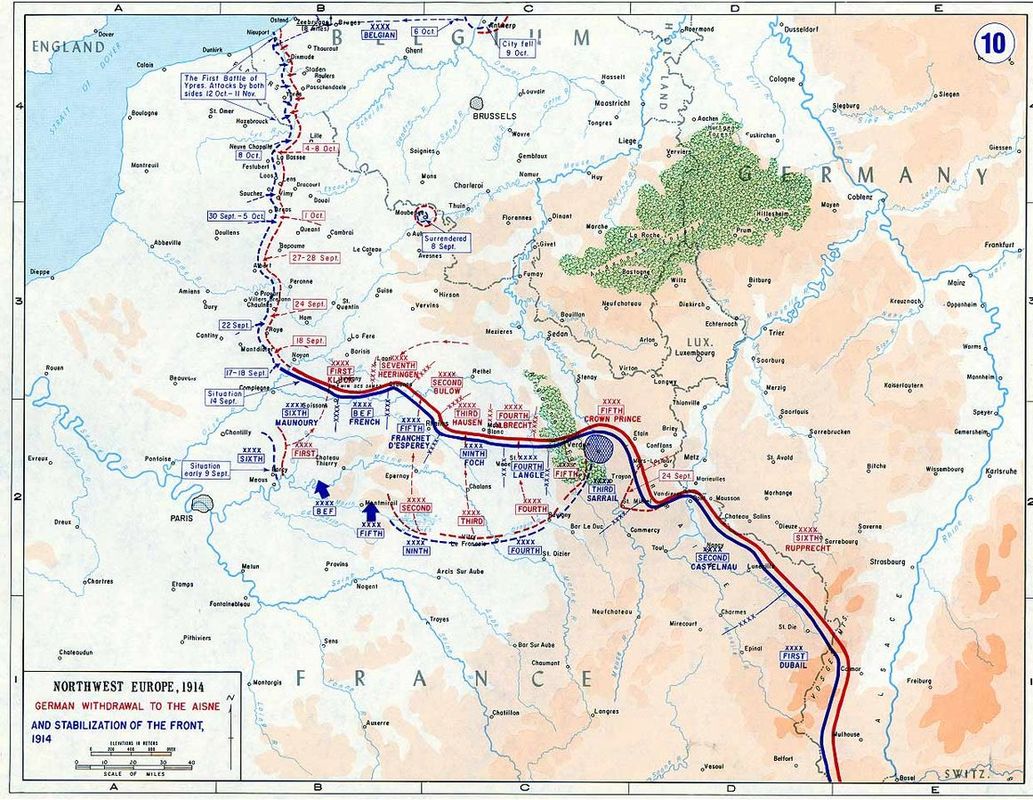
The line of trenches that made up the Western Front, from 1914 to 1918.
German troops had moved into France, but were stopped by opposing forces who tried to push them back. As the war went on, a continuous line of trenches was built that went right through the French-Belgium border. This fighting zone between the Germans and the Allies was called the “Western Front.”
Most Canadian operations took place on the Western Front. In the next section, you’ll learn about the key battles for Canadians.
Canada’s role in World War I
Canada took part in World War I from the beginning. When Great Britain declared war on Germany on August 4, 1914, Canada was automatically pulled into the war as part of the British Empire.
Canadian troops fought mainly on the Western Front, participating in many battles.
Were these battles historically significant for Canada? Were they also important to the British and French, and their colonial allies who fought on the Western Front?
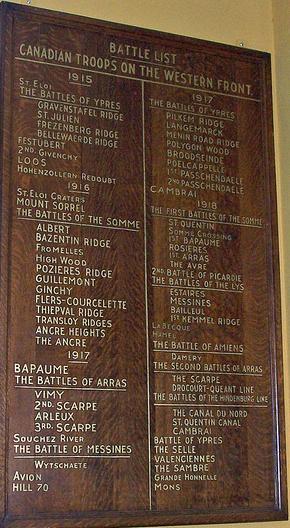 This plaque lists the Western Front
This plaque lists the Western Front battles that Canadian troops participated in.
(Royal Military College in Kingston, Ontario)
Historical significance
What is historical significance?
Part of the answer can be found in the idea that there is a difference between “history” and “the past.” As historian Ruth Sandwell states, the past is “everything” – think of it as a big, chaotic jumble. Historians Peter Seixas and Tom Morton see history as “someone’s attempt to make sense and order out of the chaos of everything-ness.”
As one way to make order out of the chaos of the past, historians try to determine historical significance. In other words, they try to identify events that had a lasting impact on many people.
Four significant battles
What was Canada’s role on the Western Front in World War I? /Four battles are considered to be historically significant:
- The Second Battle of Ypres
- The Battle of the Somme
- The Battle of Vimy Ridge
- The Battle of Passchendaele
The locations of these battles have been pointed out on the following map of the Western Front.
You will look at each of these battles in turn. In addition to learning the basic facts about what happened, you’ll examine what Canadians accomplished, and why the battle is still remembered today. In other words, you’ll ask the question, What makes this battle historically significant?
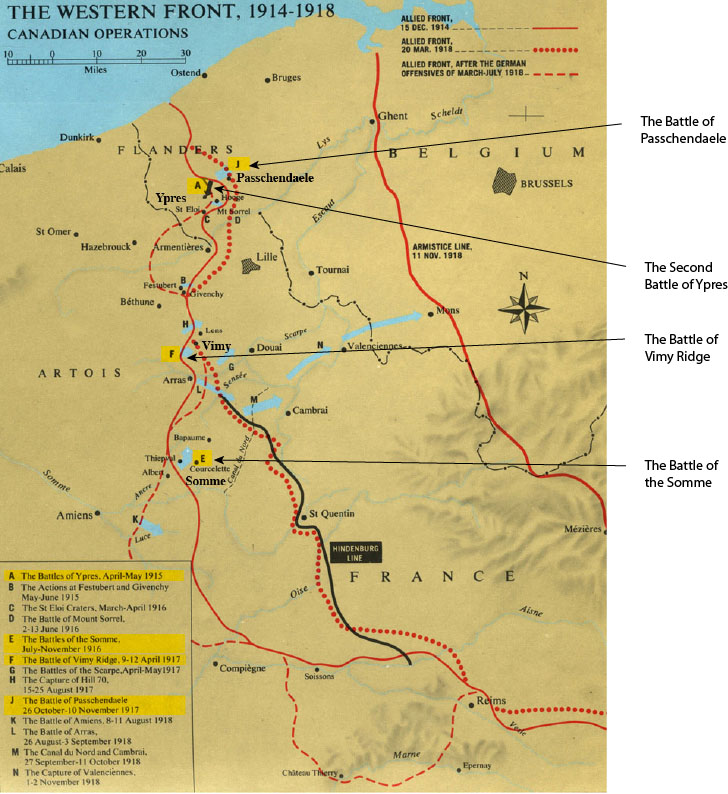 The locations of the four key battles on the Western Front.
The locations of the four key battles on the Western Front.
The Second Battle of Ypres
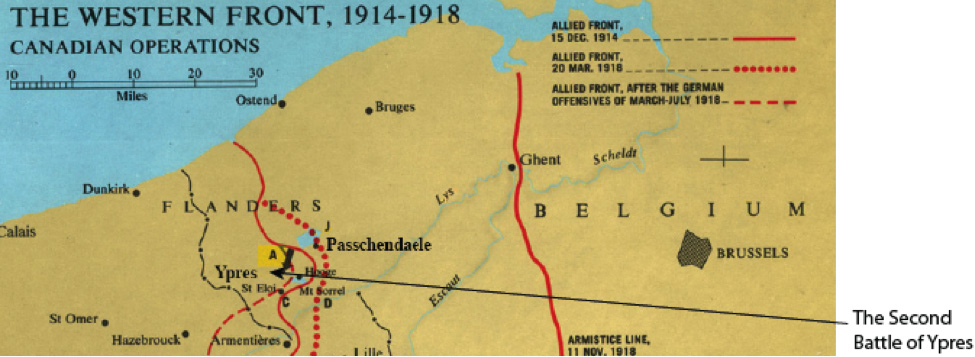
The Second Battle of Ypres was Canada’s first major participation in the war. This battle was historically significant for three main reasons:
- Ypres was an important Allied position.
The battle took place in 1915, in the country of Belgium. Ypres was a key location for the Allies because from there French sea ports could be protected.
- First use of toxic gas as a weapon of war.
This was the first battle in which Germans used chlorine gas as a weapon. Green-yellow gas clouds drifted over unsuspecting Allied soldiers, forcing many of them to run away or die from suffocation. Casualties were high. /Six thousand Canadian soldiers died in this battle.
- A turning point in Allied assessment of Canadian troops.
Canadians stood their ground in the face of gas attacks and German barrages. This earned Canadian troops a reputation as solid and reliable. After this, Canadian forces were viewed as truly valuable resources in the Allied effort, and not just as a small part of Britain.
Source: This information is a summary of relevant points from a description provided at the Canadian War Museum. To see the original article, look for this online source: http://www.warmuseum.ca/cwm/exhibitions/guerre/second-ypres-e.aspx
Visual sources can help us determine historical significance.
These images depict scenes from the Second Battle of Ypres. How do they help you assess the battle’s significance?
The Battle of the Somme
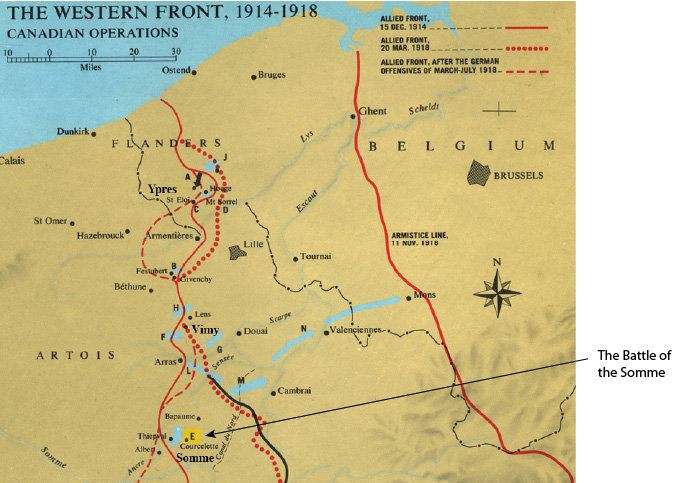
The Battle of the Somme lasted for four months in 1916. It’s considered historically significant for three main reasons.
- German forces proved tough to destroy.
It was difficult to locate the German forces. When they were found, they had dug their trenches so deep that Allied artillery fire did not destroy them. In addition, the Allies’ weapons did not work properly due to manufacturing problems in Britain.
- Losses were catastrophic.
The Allies expected this to be a quick, easy battle, and were completely unprepared for what they encountered. The first day was a total disaster. Sixty thousand Allied soldiers were killed, while the German side saw few casualties. By the end of the battle, more than 600,000 soldiers on each side had been killed.
- Plans of attack were controversial.
One of the war’s longest battles, the Somme is still controversial today. British generals in charge were criticized for giving pointless orders and ordering pointless attacks that just seemed to put more soldiers at risk. They also seem to have done little to get weapons that would have more impact on the German forces. Some historians suggest that nothing could have been done differently to change the outcome, but others say leaders were reckless or ineffective.
Source: This information is a summary of points from a description provided at the Canadian War Museum. To see the original article, look for this online source: http://www.warmuseum.ca/cwm/exhibitions/guerre/the-somme-e.aspx
These are images from The Battle of the Somme. How do they help you assess the battle’s significance?
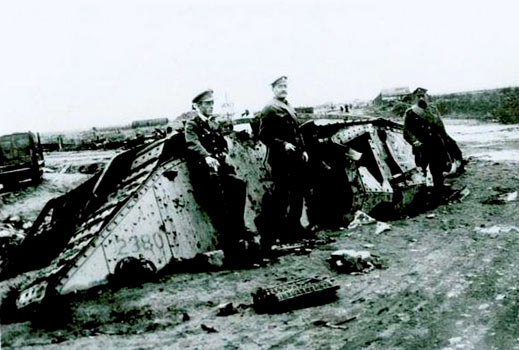
A disabled tank. The first tanks were very slow, and often broke down or got stuck in the mud.
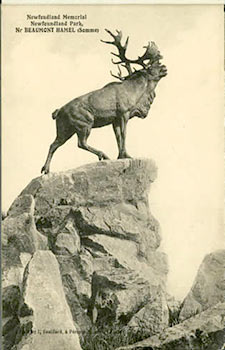 This bronze stag in France is a memorial to Newfoundland’s soldiers who died in WWI.
This bronze stag in France is a memorial to Newfoundland’s soldiers who died in WWI. The Battle of Vimy Ridge
The Battle of Vimy Ridge is considered historically significant for three main reasons:
- Vimy Ridge was strategically important.
From the top of the seven-kilometre long Vimy Ridge in northern France, you could see the whole surrounding countryside. The ridge was a strategic high point. Previous French and British attempts to win back the area had failed, and cost many lives. The Canadians were sent in, and they wanted to succeed where others had failed.
- The battle was well-planned.
Lieutenant-General Sir Julian Byng, the Canadian Corps commander, and General Arthur Currie came up with new tactics to use in the battle. They had learned from the devastation of the Battle of the Somme, and prepared soldiers intensely for what they might experience on the battlefield. Canadian forces timed their advances to follow huge rounds of artillery. This helped them be more effective in taking take over German positions and isolating enemy troops. On 9 April 1917, despite hard fighting all across the front, the Canadians captured most of the ridge. They took the remaining portions of it by the 12th.
- Taking Vimy Ridge symbolized victory for Canada.
Vimy Ridge is thought of as an “all-Canadian” battle. This victory is seen as a defining event for Canada – a symbolic step toward full independence from Britain.
Source: This information is a summary of points from a description provided at the Canadian War Museum. To see the original article, look for this online source: http://www.warmuseum.ca/firstworldwar/history/battles-and-fighting/land-battles/vimy-ridge/
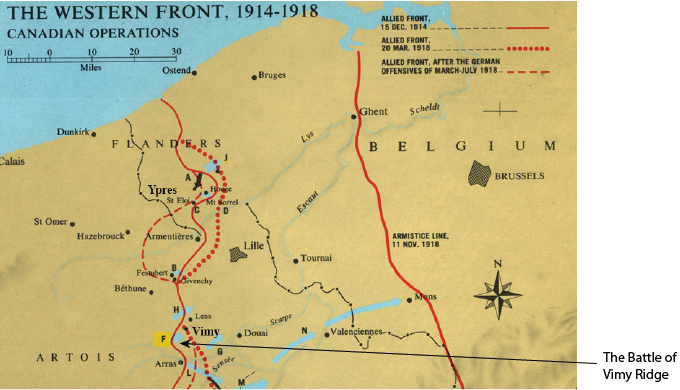
Vimy Ridge, which was a turning point in World War I, is thought to be Canada’s most significant victory.
These images are from Vimy Ridge. How do they help you assess the battle’s significance?
The Battle of Passchendaele

Ten thousand Canadian were ordered to the Passchendaele front in mid-October, 1917. This battle is considered historically significant for three main reasons:
- Horrible conditions
This battle took place in a swampy, mud-filled bog. When Canadians arrived to relieve Australian and New Zealand troops, they were shocked by the terrible battlefield conditions. Bodies, equipment, and materials were stuck in the mud and there was decomposition everywhere.
- Deliberate preparation and attack
Sir Arthur Currie, commander of the Canadian Corps, objected to the battle, worried many would die. Since there was no choice but to attack, Currie prepared very carefully. He ordered construction of new roads, building of gun pits, and repair of the light rail tramways. Tonnes of ammunition were transported to the front to prepare for the artillery barrage that would back up the infantry attack. Currie set up a detailed plan of attack and had his forces practise and prepare for it.
- Devastating outcome
Despite the preparations and planning, there were massive casualties. More than 15,000 Canadian soldiers were killed. In all, the Allies lost about 275,000 people and the Germans about 220,000. This made Passchendaele one of the deadliest battles, and one of the low points in the British war effort.
Source: This information is a summary of points from a description provided at the Canadian War Museum. To see the original article, look for this online source: http://www.warmuseum.ca/firstworldwar/history/battles-and-fighting/land-battles/passchendaele/ (Opens in new window)
Note that mud is a constant in these images of Passchendaele. How do the images help you assess the battle’s significance?
Judging historical significance
Now that you have had a chance to learn about the four battles, how do you decide which is most significant? Significant events generally result in great change over long periods of time for large numbers of people. Evaluating historical significance also depends on your point of view and purpose. In addition, an event or person may be considered significant if linked to larger trends and stories that reveal something important.
So to evaluate the historical significance of events, think about these questions:
- How deeply have people’s lives been affected? (impact)
- How many lives have been affected? (quantity)
- For how long have people’s lives been affected? (duration)
- Does it still affect people today? (relevance)
Of the four major battles on the Western Front that you’ve just explored, which do you think is the most historically significant for Canada? Explain.
This is student Chen’s answer:
All of these battles are significant, but I would probably choose the Battle of Vimy Ridge. It was an important victory, an “all-Canadian” battle, and a turning point in the war.
Conclusion
Canada joined World War I on August 4, 1914, when Great Britain declared war on Germany. Canada was automatically pulled into the war as part of the British Empire. However, during the war, Canadian forces fought as a distinct unit and made strong contributions in critical battles on the Western Front.
Many Canadians believe that our forces’ role on the Western Front was significant, and that Canada’s contributions made a difference in the overall outcome of the war. Canada’s role in World War I is also linked to Canada’s progress toward independence and equal status with other nations. Canada’s efforts and accomplishments throughout the war helped develop the country’s pride and sense of identity. Other world powers began to see Canada as a nation in its own right.

